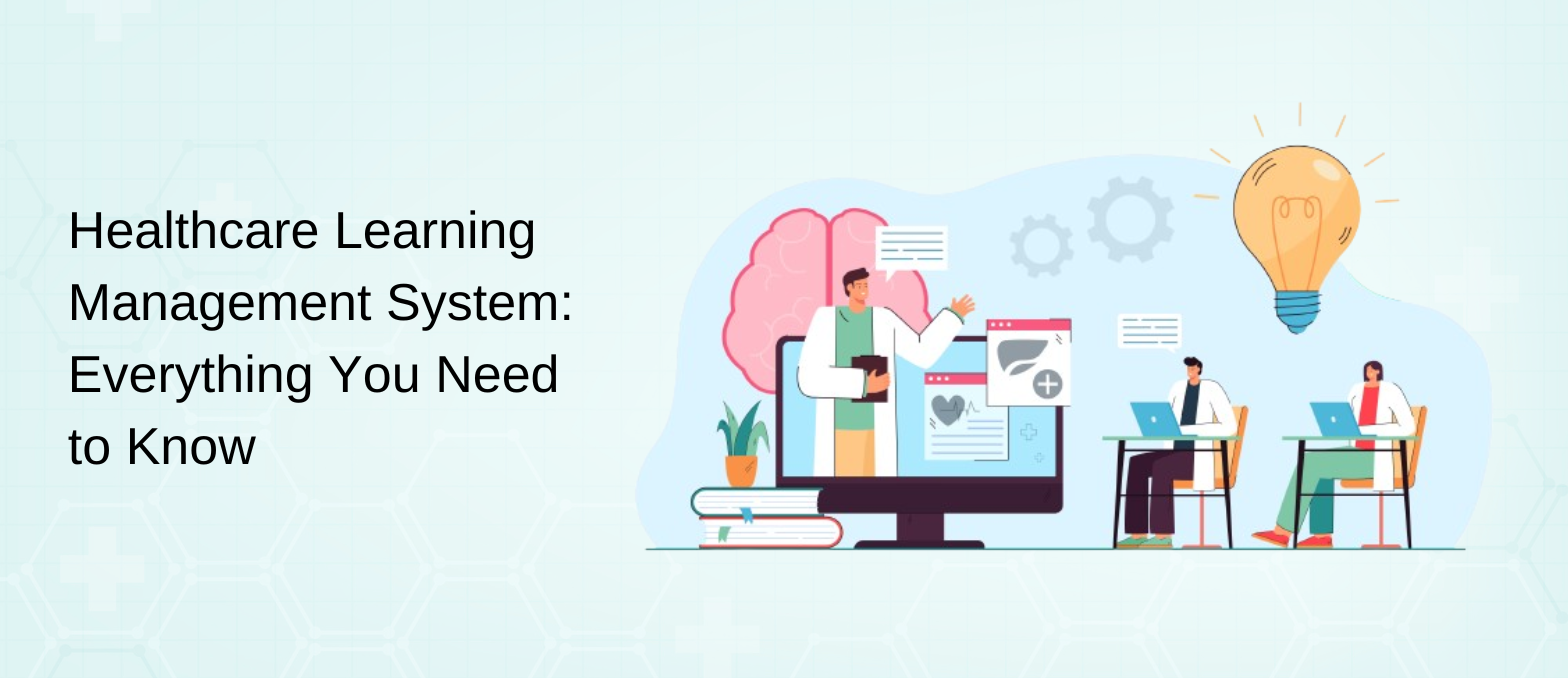As we enter 2023, companies are shifting their focus to employee benefits and welfare and giving importance to employee benefit programs . Now, employers are putting in special efforts to ensure that office staff is satisfied with the workplace environment. The motto is to improve employee retention rates and boost productivity and work quality. Over the past few years, we have witnessed innovations in this space, with several technologies contributing to the aim. There is no denying that technology has changed how companies work, and for all good reasons. It has improved work flexibility, ambience, and training & education processes.
But wait there; the big question is: What is ‘Employee Benefit?’
In simple terms, it includes perks & benefits, which can be monetary or non-monetary, provided to workers in addition to their wages or salaries. The concept covers a wide range of programs, from an insurance plan and profit-sharing to smooth organizational communication and vacations. The idea behind this is to show them that they are a valuable asset to the company and you are invested in their future. Of course, it will help you recruit skilled candidates and improve the overall profitability of the business. As Joe Lineberry, senior vice president at Aon Consulting, stated, “Give employees the benefits they value, and they’ll be more satisfied, miss fewer workdays, be less likely to quit, and have a higher commitment to meeting the company’s goals.”
No wonder employee benefits administration has become a serious business these days. Several studies have concluded that over 60% of employees feel demotivated and less enthusiastic without effective wellness programs. On the other hand, office members have shown an 80-90% growth in their productivity when they have favourable and healthy working conditions. Considering these facts, organizations are now exploring more clever and efficient ways to foster employee benefits, and technology is undoubtedly the most popular. Companies are incorporating the latest and advanced technologies into their employee welfare schemes. Artificial Intelligence, Virtual Reality, Data Analytics, and more have opened the door to new possibilities for Human Capital Management and will soon become a regular part of HR.
Role of technology in Employee Benefit Programs
Employee benefit programs have become integral to a company’s compensation package. As businesses compete for talent in a tight labour market, offering comprehensive and attractive employee benefits has become more critical than ever before. Technology has revolutionized employee benefit services offered, administered, and accessed. Here, we will discuss the role of technology in employee benefit programs, focusing on small business employee benefits and its administration.
Small Business Employee Benefits
Small businesses face unique challenges when it comes to offering employee benefits. They often have limited resources and cannot afford to hire a dedicated HR team to manage their employee benefits program. However, offering competitive employee benefits is essential to attract and retain top talent. This is where technology comes in.
Technology has made it easier for small businesses to offer employee benefit services that are on par with those of larger companies. Many employee benefit administration platforms offer a range of benefits, including health insurance, retirement plans, and wellness programs. These platforms are easy to use, and employees can enrol in benefits and manage their accounts online.
One significant advantage of using technology for small business employee benefits is cost savings. By using an online platform, businesses can save money on administrative costs, such as paper-based enrollment and communication. Thanks to group purchasing power, they can access a broader range of benefit options at a lower cost.
Employee Benefits Administration
Employee benefits administration can be a complex and time-consuming process. It involves managing employee enrollment, eligibility, and claims, among other things. Technology has simplified the process, making it more efficient and accurate.
Employee benefits administration software automates many tasks in managing employee benefits. For example, it can track employee eligibility and enrollment, process claims, and generate reports. It reduces the risk of errors and frees HR teams to focus on more strategic tasks.
In addition, employee benefits administration software can provide employees with self-service options. It means they can access their benefits information and change their coverage online. It saves time and improves the employee experience by giving them more control over their benefits.
One important consideration when it comes to employee benefits administration is data security. Many employee benefit administration platforms offer robust security measures to protect employee data. It includes encryption, access controls, and regular audits.
Technology has played a significant role in improving employee benefit programs. It has made it easier for small businesses to offer competitive benefits and simplified employee benefits administration. However, choosing the right technology platform is essential to ensure that it meets your business’s and your employees’ needs. By leveraging technology, businesses can offer comprehensive and attractive employee benefits that help them attract and retain top talent.
So, in this blog, we will discuss a few latest technologies contributing to employee benefit programs and their smooth execution. Let’s get started:
Big Data
With technological advancements and evolution, an enormous amount of information is now at our fingertips. With just a few clicks on the computer, the employer and HR manager can have all the required details. The online data and information collected from the employees can serve various purposes simultaneously by bringing all the details to one destination. Companies can ensure participation and forecast the future course of action, which is essential to creating a personalized employee benefits program.
Moreover, data analytics can help evaluate the team which is satisfied and happy with the highest retention rates. Also, in finding the reasons that make employees happy or stressed to come up with the package that works in favour of the company. The data can also identify disease trends that can be used to build schemes that are beneficial for their mental and physical health. The power of big data helps comprehend the options valuable to employees and study their behaviour patterns.
Artificial Intelligence
Artificial Intelligence is transforming how employers interact with employees and care for their wellness. It has outperformed humans regarding decision-making, recruiting, and ensuring a healthy environment. The companies that have employed AI tools and techniques have witnessed immense growth over the years, making their tasks more straightforward and efficient. Firstly, let’s talk about the hiring process, which is a strenuous and costly task.
However, with Artificial Intelligence at your assistance, it is getting easier and even helps in finding highly suitable skilled professionals for the job. You can pick the most qualified and experienced candidates amongst numerous applicants and get done with the recruiting step within a few days. The time recruiters would have invested in reaching out to people can be put to better use, like honing the skills of new employees and evaluating their knowledge via a structured system.
Apart from this, employees can opt for the right and relevant employee benefit plan after considering all the available options. Most importantly, AI can promote health in the workplace by accessing different data from various resources and spreading the word about possible treatment options.
Cloud Computing
Do we need to exaggerate the importance of cloud computing? Be it any industry or sector, cloud platforms have proved their potential, and HR is no exception. Unlike earlier, when data storage systems were disorganized, cloud-based applications have made the data and other information easily accessible online. Companies are now shifting to a flexible, secure, and reliable environment and all the credit goes to cloud platforms.
Organizations can centralize the data without hassle and streamline operations & workflow across the branches and offices. It will positively impact workforce management, product development, and business integration. However, before switching to a cloud-based HCM system, ensure your company is ready to adapt to this technology and that it can add value to your business.
Wearables
The use of wearable technology by companies and consumers has skyrocketed over the past few months. It has made everything convenient, from controlling their diet to monitoring their well-being. Needless to say, why giants like Apple, Google, and Microsoft have introduced it in their offices and integrated it with other technologies.
As wearable technology can track your fitness and daily routine, employers are using it to promote a healthier lifestyle among employees. It can analyze heart rate and monitor any unusual activity within the body with a constant eye on their health. Office members will undoubtedly be encouraged to adopt a healthy routine. Investing in this technology will minimize absenteeism, increase productivity, and motivate them to engage in physical activities.
Internet of Things
IoT has become a go-to technology for companies looking forward to transforming their business. Apart from connecting them with their consumers instantly, it creates an engaging workplace with efficient employees and a happier work environment. The IoT-based devices can inform the staff about the expected technical issue and arrange the relevant solution.
Moreover, automated routine tasks and quick interaction are no longer a big deal thanks to IoT. Employers can create safe working spaces using sensors and intelligent devices using IoT technology to track work and alert workers against danger.
Cloud-based HR systems
Cloud-based HR systems have transformed the way businesses manage their employee benefit services. These systems allow companies to store, manage, and process employee data and benefits information in a secure, centralized location accessible from anywhere with an internet connection. It has made it easier for small business employee benefits to provide employees with the benefits they deserve.
Cloud-based HR systems offer other advantages, such as automated employee onboarding, benefits enrollment, and compliance management. They also allow for real-time reporting and analytics, providing companies with valuable insights into their employee benefit programs’ effectiveness and cost.
Mobile apps
Mobile apps have changed the way employees access and manage their benefits. With mobile apps, employees can access their benefits information anytime, anywhere, from their smartphones. It includes information on their health insurance, retirement plans, and other benefits. Mobile apps can also be used to enrol in benefits, submit claims, and access wellness programs.
For employers, mobile apps provide a way to communicate with employees about benefit updates, changes, and other important information. They can also be used to send reminders and alerts to employees about upcoming enrollment deadlines or wellness events.
Telemedicine
Telemedicine is the use of technology to provide remote medical care. It has become increasingly popular recently, particularly as an employee benefit. With telemedicine, employees can consult with doctors and healthcare providers remotely, using video conferencing or other virtual communication tools.
Telemedicine is particularly useful for employees who live in remote areas or have difficulty accessing medical care. It is also a cost-effective way for companies to provide healthcare benefits to their employees. Instead of paying for expensive in-person medical visits, employers can offer telemedicine services as a more affordable alternative.
Virtual Reality
Virtual reality (VR) is a technology that simulates a three-dimensional environment in that users can interact. While it may seem like an unlikely candidate for employee benefit services, VR has been used in various ways to enhance employee wellness programs.
For example, some companies use VR to create immersive experiences that promote relaxation and stress reduction. Others use VR to provide virtual fitness classes or other wellness programs. Virtual reality can also be used for training and development, allowing employees to experience realistic simulations of job tasks and scenarios.
Health and Wellness Programs
Health and wellness programs have become increasingly popular in recent years. These programs aim to promote a healthy lifestyle among employees, reduce healthcare costs, and improve productivity. Health and wellness programs often include initiatives such as gym memberships, nutrition counselling, smoking cessation programs, and stress management techniques. Employers can now leverage technology to create more personalized and engaging health and wellness programs for their employees.
Employee benefits consultants and employee benefit management services can provide employers with data analytics tools to track employee participation and measure the impact of these programs. These tools can also help employers identify the most effective programs and where to allocate their resources.
Flexible Work Arrangements
Flexible work arrangements have become a popular option for employers and employees alike. Employees now expect greater flexibility in their work schedules, and technology has allowed employers to offer flexible work arrangements while maintaining productivity levels. Remote work has become more prevalent, allowing employees to work from home or other locations outside of the office.
Employers can leverage collaboration tools such as Zoom and Slack to ensure remote workers remain connected with their team members. Cloud-based project management tools such as Asana and Trello enable remote teams to collaborate on real-time projects, promoting productivity and collaboration. Employers can improve employee satisfaction and reduce turnover by embracing flexible work arrangements.
Online Learning Platforms
The rise of online learning platforms has transformed employee training and development. Employers can now leverage online learning platforms to provide their employees with personalized training programs, on-demand access to training materials, and the ability to learn at their own pace. Online learning platforms also allow employers to track employee progress and measure the effectiveness of training programs.
Employee benefits consultants and employee benefit management services can help employers select the best online learning platform for their organization’s needs. Employers can improve employee skills, increase productivity, and reduce turnover by providing employees with access to online learning platforms.
Employee Assistance Programs
Employee Assistance Programs (EAPs) provide employees with confidential counselling services for personal and work-related issues. EAPs aim to improve employee mental health, reduce stress, and enhance overall well-being. Technology has made it possible for employers to offer EAPs that are more accessible and tailored to the needs of their employees.
Employers can leverage telemedicine and teletherapy services to provide employees remote access to mental health services. These services allow employees to seek counselling services at a convenient time, promoting work-life balance. By offering EAPs, employers can improve employee well-being, reduce absenteeism, and increase productivity.
Online benefits portals
Online benefits portals are one of the most powerful technologies revolutionizing employee benefit programs. These portals are secure online platforms that allow employees to access and manage their benefits in one place. They provide an easy-to-use interface that simplifies the entire benefits administration process. Employees can enrol in benefits, change their coverage, update their personal information, and view their benefits statements in one place. Employers can also use these portals to manage employee benefits, track enrollment, and generate reports.
Online benefits portals have numerous benefits for small businesses. They can help reduce the time and cost associated with traditional benefits administration. Small businesses can save money on administrative costs by automating the enrollment process and reducing the need for paper-based forms. Additionally, the portals can help increase employee engagement and satisfaction by providing a convenient and accessible way to manage their benefits.
Social media
Social media is another technology that has revolutionized employee benefit programs. Social media platforms such as LinkedIn, Twitter, and Facebook can be used by small businesses to communicate with their employees about their benefits. Social media provides a quick and easy way to share information about benefits, changes in coverage, and other essential updates.
One of the most significant advantages of social media is its ability to engage employees. Social media can be used to share educational content about employee benefits and other related topics. It can help employees understand the value of their benefits and how to use them effectively. Social media can also create a sense of community among employees, which can help improve employee morale and retention.
Challenges of using technology in Employee Benefit Programs
Employers increasingly turn to technology to streamline employee benefit management services, but this approach has challenges. Here are some of the challenges of using technology in employee benefit programs:
Complexity of Technology
Most employers lack the technical expertise to implement and manage employee benefits solutions. Integrating various benefit programs, such as health insurance and retirement benefits, requires a high level of technical know-how, which most employers do not possess. An employee benefits consultant can help bridge this gap, but even then, the complexity of the technology can be overwhelming.
Security Concerns
Technology in employee benefit management services can be a double-edged sword. While it can provide convenience and efficiency, it also exposes sensitive employee information to potential cyber threats. The use of technology in employee benefits programs requires strict security protocols to prevent data breaches, identity theft, and other security threats. It can be a significant challenge for employers, especially those with limited resources.
Limited Customization
Many off-the-shelf employee benefits solutions lack the flexibility to cater to the unique needs of different organizations. Employers may require specific features or options that are not available in the standard solutions, which can limit the effectiveness of the technology. Customizing the technology can be expensive and time-consuming, making it challenging for employers looking for quick and affordable solutions.
Employee Engagement
Employee benefits solutions that rely heavily on technology may alienate some employees who are not tech-savvy. While technology can make things more convenient for some employees, it can also make things more complicated for others, reducing engagement with the benefit programs. Employers must balance using technology and other traditional methods to ensure all employees are engaged and can access the benefits quickly.
Cost
Implementing technology in employee benefit programs can be expensive, especially for small and medium-sized organizations with limited budgets. The cost of acquiring and maintaining the technology, coupled with the cost of training employees on how to use it, can be a significant challenge. Employers need to weigh the benefits of using technology against the cost of implementation to determine if it is a viable solution for their organizations.
Conclusion
Technology is evolving the space we work in, and we are not complaining. It brings employers and employees together, ensuring seamless communication and a healthier workplace. Of course, it’s not one size fits all, so companies need to analyze their requirements and then switch to the employee benefits software that suits them the best. However, once an organization embraces advanced technology, it will ensure effective employee benefits schemes and massive growth in productivity and efficiency. Hence, creating a Win-Win situation for all.
Frequently asked questions (FAQs)
What is an employee benefits program in compensation management?
An employee benefits program is a set of non-wage compensations employers offer to attract and retain employees. These benefits may include health insurance, retirement plans, life insurance, disability insurance, paid time off, and other perks. Employee benefits are a significant part of compensation management as they contribute to an employee’s total value. They often enhance employee satisfaction, improve retention rates, and attract top talent.
What are the four types of benefits offered in employee benefit programs?
The four types of benefits typically offered by employers include:
- Health benefits, such as medical, dental, and vision insurance;
- Retirement benefits, such as 401(k) plans and pensions;
- Income protection benefits, such as disability insurance and life insurance;
- Miscellaneous benefits include paid time off, tuition reimbursement, and employee discounts.
These benefits are designed to attract and retain employees, promote employee wellness, and provide financial security. The specific benefits an employer offers may vary based on the industry, company size, and other factors.
What is a benefit that technology brings to employees?
One benefit that technology brings to employees is increased efficiency and productivity. With the help of technology tools such as email, messaging, project management software, and video conferencing, employees can communicate and collaborate more quickly and efficiently, regardless of their physical location. It can save time and reduce the need for in-person meetings or travel. Technology can also automate repetitive tasks, allowing employees to focus on more creative and high-value work. Overall, technology can improve the work experience for employees by streamlining processes, increasing communication, and enabling remote work.
What are the benefits of using technology in employee benefit programs to help manage business operations?
Technology can significantly benefit businesses in managing operations by increasing efficiency, reducing costs, and improving communication. With software and automation, tasks such as inventory management, payroll processing, and customer service can be streamlined and completed faster. Data analysis tools also provide insights that can help make informed business decisions. Additionally, technology allows for remote work, expanding the pool of potential employees and reducing the need for physical office space. Incorporating technology into business operations can lead to increased productivity and profitability.
How technology affects employee benefit programs?
Technology has revolutionized employee benefit programs by streamlining administration, providing employees access to information and resources anytime, and improving communication. Automated enrollment and management of benefits have reduced errors and costs while enhancing compliance. Technology also allows employees to engage with benefits through personalized portals and mobile apps, increasing satisfaction and utilization. Virtual healthcare services, wellness programs, and financial planning tools are among the latest benefits enabled by technology. While some argue that technology can depersonalize benefits, the benefits of increased access and convenience ultimately outweigh potential drawbacks.












